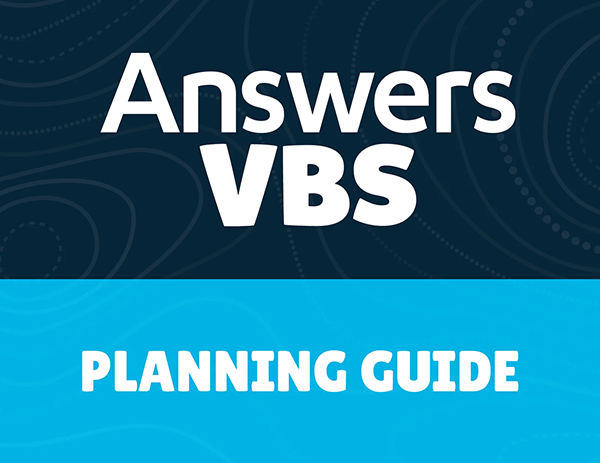How to Craft a Sensory-Friendly VBS
Here at Answers VBS we encourage churches to easily include children of all abilities in their VBS program. To assist with that, we provide a Special Needs Supplement for our curriculum to go along with our teaching guides. Because every child is made in the image of God (Genesis 1:27), they should be welcomed to and included in VBS. They need to learn more about God’s Word so they can hear the gospel and grow in their relationship with Christ.
However, due to sensory processing issues, some children can’t handle the overload that VBS brings to their senses. That’s why some churches host a special sensory-friendly VBS specifically for these children. With this type of program, decorations may be kept to a minimum, music is scaled down, time frames are adjusted, and movement between areas is reduced. With their church, Answers VBS leaders Carol and Candy ran a sensory-friendly VBS last summer just for those with sensory issues and disabilities. Due to the lack of resources for adults with disabilities, they chose to include both adults and children in their program.
Here are some of Carol and Candy’s tips for how to run a sensory-friendly VBS that is safe for all people with special needs:
- Seek training for your volunteers and yourself on how to run a program for those with disabilities. Carol and Candy used Parent Educational Advocacy Training Center. Also consider having several parents of children with disabilities, or perhaps an adult with a disability, share their struggles and suggestions for how to create a welcoming space and program.
- Set up a quiet room. This room is a place for anyone who may need time to disengage or take a break if they are getting overwhelmed.
- Prepare “distraction baskets.” Fill baskets with sensory items, such as squishy toys, to keep hands busy during teaching times or whenever they are needed. This is a great idea for any VBS since some children learn better if their hands are occupied.
- Cut down the number of rotations. Instead of having separate assembly, snack, games, and craft rotations, consider combining some of these to limit the number of distractions and upsets.
- Keep the music turned down low with no flashy lights or other elements that might cause a sensory overload.
- Keep the day short. Five long days might be too much. Consider short days (perhaps two hours) and perhaps only two or three days, instead of five.
Carol and Candy discuss their sensory-friendly program in this video with Stacia McKeever, the project manager of our VBS:
If you are considering running a sensory-friendly VBS, be sure to order and read through the Special Needs Supplement available as an additional purchase with Answers VBS.
© 2026 Answers in Genesis | Privacy Policy

